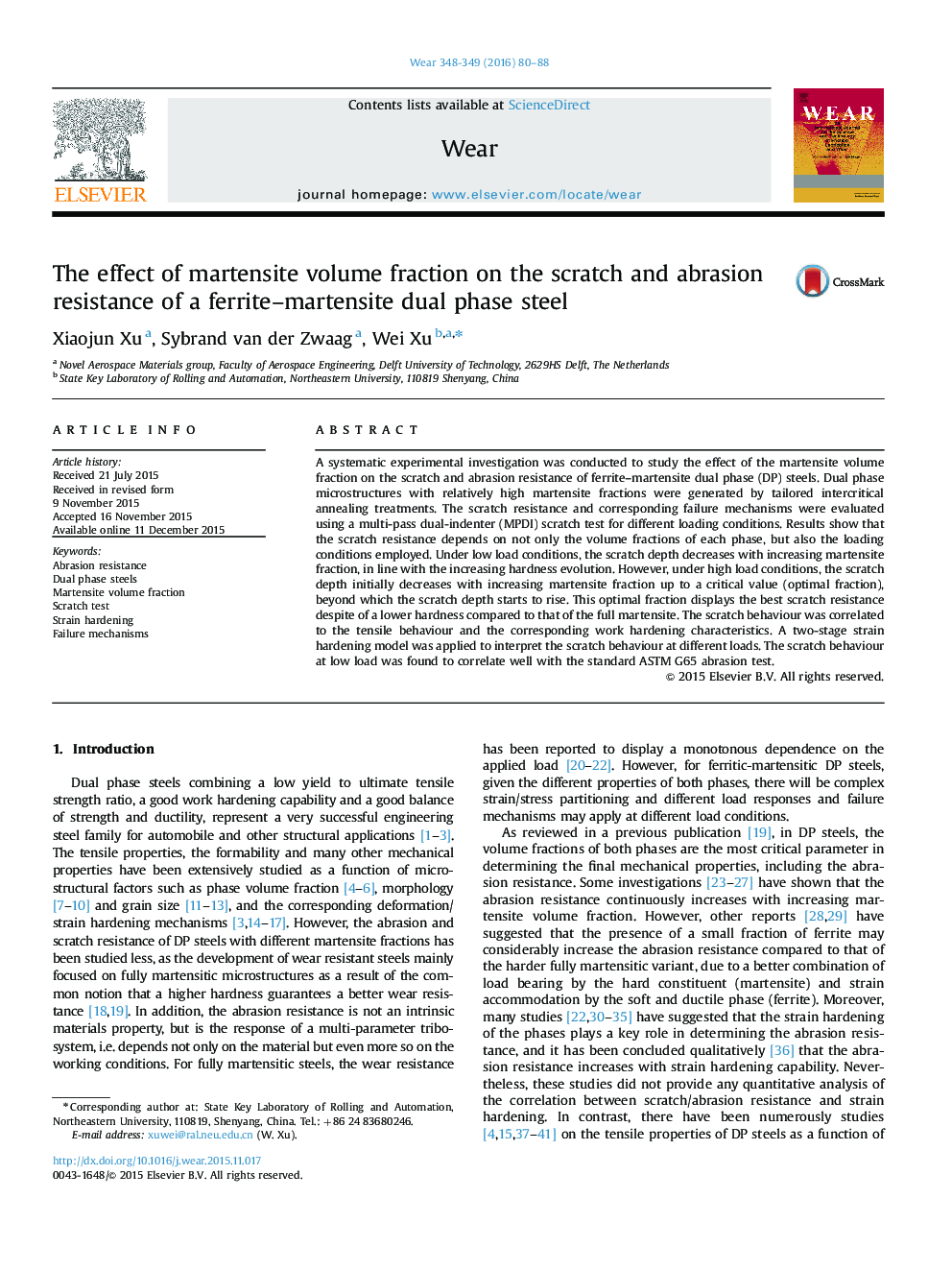| Article ID | Journal | Published Year | Pages | File Type |
|---|---|---|---|---|
| 616964 | Wear | 2016 | 9 Pages |
•The MPDI test allows separation of effects of microstructures and load conditions.•The scratch resistance depends on both martensite fraction and working condition.•The scratch behavior and the tensile behavior were correlated.•The best resistant steel is FM steel at low loads but is DP steel at high loads.•The MPDI scratch test for a mild work condition correlates well with ASTM G65 test.
A systematic experimental investigation was conducted to study the effect of the martensite volume fraction on the scratch and abrasion resistance of ferrite–martensite dual phase (DP) steels. Dual phase microstructures with relatively high martensite fractions were generated by tailored intercritical annealing treatments. The scratch resistance and corresponding failure mechanisms were evaluated using a multi-pass dual-indenter (MPDI) scratch test for different loading conditions. Results show that the scratch resistance depends on not only the volume fractions of each phase, but also the loading conditions employed. Under low load conditions, the scratch depth decreases with increasing martensite fraction, in line with the increasing hardness evolution. However, under high load conditions, the scratch depth initially decreases with increasing martensite fraction up to a critical value (optimal fraction), beyond which the scratch depth starts to rise. This optimal fraction displays the best scratch resistance despite of a lower hardness compared to that of the full martensite. The scratch behaviour was correlated to the tensile behaviour and the corresponding work hardening characteristics. A two-stage strain hardening model was applied to interpret the scratch behaviour at different loads. The scratch behaviour at low load was found to correlate well with the standard ASTM G65 abrasion test.
